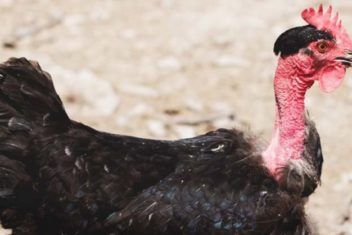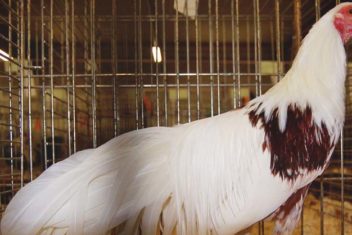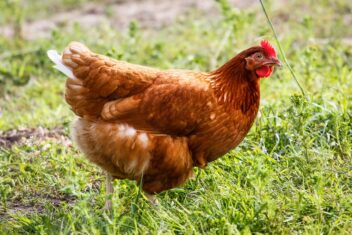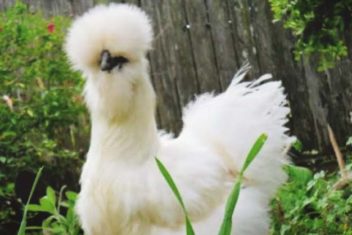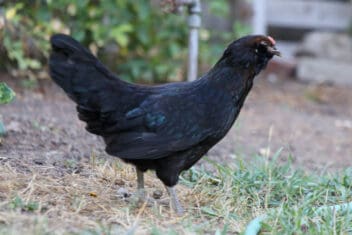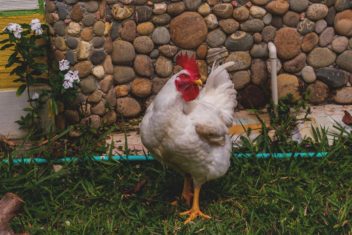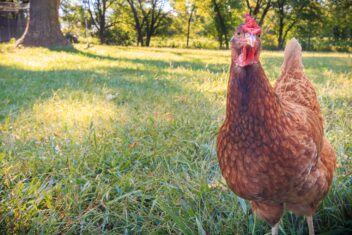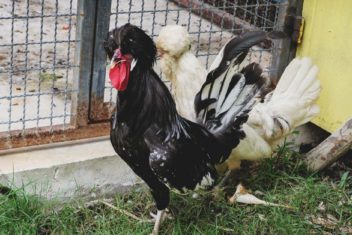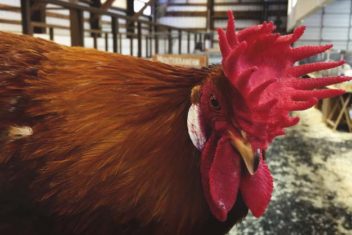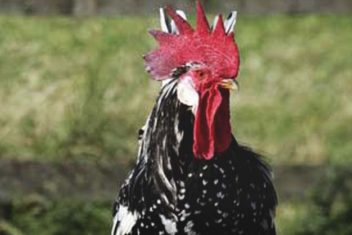For those that like eye-catching chickens then Appenzeller Spitzhaubens Chickens should definitely fit the bill. This bird has a very 101 Dalmatians theme. Some people call these chickens Cruella De Vil and others refer to them as Dalmatians with mohawks. However you look at these perky birds, they are certainly unique.

About Appenzeller Spitzhauben Chickens
Appenzeller Spitzhaubens appeared around the Appenzell region of Switzerland in the 1500s. Today, so many years later, this breed is widely loved for gorgeous looks and decent egg production.
While the exact date of importation is a bit foggy, we know that the Appenzeller Spitzhauben was brought to America by a doctor. There has been a push for Appenzeller Spitzhaubens to be recognized as a standard breed in the United States. However, this beautiful bird has not yet gained recognition by the American Poultry Association.
The Appenzeller is most commonly found in the Silver Spangled color variety, with Gold Spangled being a close second. Black Appenzellers also exist but aren’t quite as common as their flashier siblings.
Appenzeller Spitzhauben Characteristics
1. Size and Weight
Appenzeller Spitzhaubens are petite chickens, giving them a very dainty and sophisticated look. Roosters only reach a full-grown weight of approximately 5.5 pounds. Hens are naturally a bit smaller, weighing in at around 4 pounds at full-grown weight.
2. Temperament
For such little birds, Appenzeller Spitzhaubens sure do have big personalities. These chickens aren’t flighty and anxious, but they are nearly always on the move and likely won’t be too interested in cuddling up in your lap to stay a while. For those that don’t like chickens that go broody every few weeks, Appenzeller Spitzhauben hens rarely have the inclination to go broody.
3. Egg Production
While the eggs aren’t huge when coming from such a tiny chicken, Appenzeller Spitzhauben hens don’t disappoint in the egg production department. A single hen can produce anywhere from 3-5 eggs in one week.
4. Meat Production
If you’re after a meat producer, Appenzeller Spitzhaubens are going to be a sore disappointment. These chickens are simply too small to produce a carcass that is worth your time for processing. If you like a smaller chicken, consider Cornish Game hens.
Taking Care of Appenzeller Spitzhaubens
1. Feeding and Nutrition
If your journey with Appenzeller Spitzhaubens begins with chicks, you’ll need to feed them a good quality chick starter. Your growing birds can remain on this feed until 11-14 weeks of age, at which point you’ll need to transition to a laying feed.
Appenzeller Spitzhaubens should remain on laying feed for the rest of their lives to support healthy plumage and strong eggs.
2. Housing and Fencing
One thing that is important to know about Appenzeller Spitzhaubens is that they have an extreme disdain for confinement. If you do not have the space or desire to free-range your chickens, you probably don’t want to acquire Appenzeller Spitzhaubens.
There have been some chicken keepers to successfully confine their chickens. However, you must have an extremely large, covered run if you try to keep Appenzeller Spitzhaubens confined.
Appenzeller Spitzhaubens have a terrible reputation for attempting to roost in trees, which leaves them vulnerable and exposed to a myriad of nocturnal predators. It’s important to instill strong roosting habits in the coop from a young age to prevent these issues.
Inside the coop, provide 3-4 square feet per chicken to make sure everyone has adequate spacing for nighttime and rainy days.
3. Health Issues and Care
Appenzeller Spitzhaubens are healthy birds that don’t have any specific hereditary issues. However, this does not mean they can’t contract a variety of diseases and illnesses. Vigorous biosecurity and general flock management will have a significant impact on how healthy your flock stays.
It’s also important to be wary of parasites such as lice, mites, and worms. These are common issues that will plague flocks and greatly affect the health and vitality of your chickens.
4. Breeding
Especially in America, high-quality Appenzeller Spitzhaubens can be difficult to find. There are several dedicated breeders working to perfect Appenzeller in an effort to gain recognition for this outstanding chicken.
If you choose to breed Appenzeller Spitzhaubens, familiarize yourself with the breed standard and try to get in contact with some fellow breeders for support as you start out with your new endeavor.
Breed Alternatives
1. Polish Chicken
Some people like a unique chicken, but don’t want to search far and wide for a rare breed. Polish Chickens can easily be found in many stunning, laced varieties. Additionally, these pretty birds also have the lovable topknot that Appenzeller Spitzhaubens proudly sport.
Did You Know?
The word Spitzhauben means “lacy bonnet”, a name that honors the lacy, pointed bonnets that women of Switzerland wore.
Appenzeller Spitzhauben chickens are no doubt an interesting and unique breed that will add a gorgeous flair and style to your flock. If you want a break from the same old ordinary-looking egg layers, Appenzeller Spitzhaubens will fit right in.

